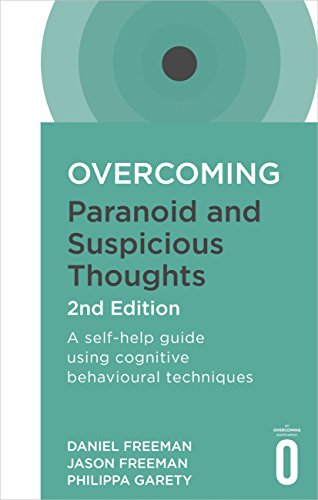Overcoming Paranoid and Suspicious Thoughts, 2nd Edition: A self-help guide using cognitive behavioural techniques (Overcoming Books)
amazon.com
Overcoming Paranoid and Suspicious Thoughts, 2nd Edition: A self-help guide using cognitive behavioural techniques (Overcoming Books)

If you do find yourself worrying outside your worry periods, simply write down what’s bugging you and tell yourself you’ll return to it at the appropriate time.
She’d spend hours analysing all the ambiguous verbal and nonverbal signs she’d encountered: for example, glances and comments and smiles. And, as we saw in the previous section, Emily was also dealing with feelings of anxiety, unhappiness and guilt – all typical internal triggers. To these, we can add the fact that she was badly down on her sleep,
It’s another vicious cycle. Our suspicions make us difficult to be around. So after a while our friends and colleagues stop trying to spend time with us. This appears to provide even more justification for our suspicions: it seems as if people really don’t like us . . .
It was like I couldn’t concentrate on anything else until I’d identified all the ways in which people had tried to get at me that day.
suspicious thoughts are usually caused by a combination of factors. We’re dealing with a stressful situation, and this has an impact on the way we feel: we might become anxious or depressed, for example. When we feel like this, we notice things that normally we’d not give a second thought to but that now seem odd or confusing. When we try to make
... See moreA trial we undertook with 150 patients with severe paranoia, for example, showed that simply limiting the time we spend worrying about suspicious thoughts actually reduces the paranoia.